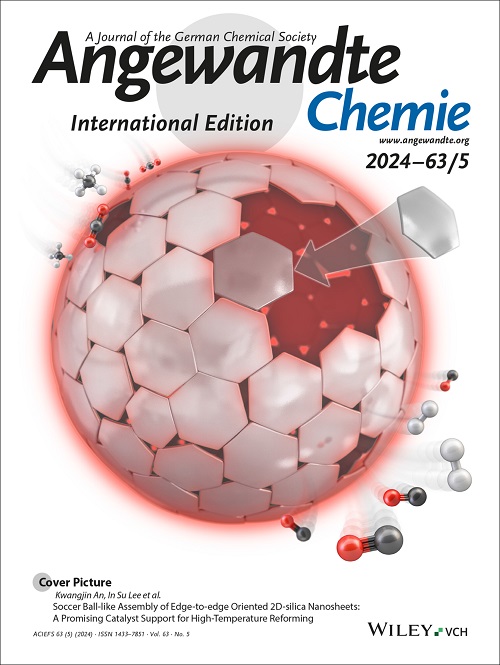Synergistic Covalently and Mechanically Interlocked Polymer.
IF 16.9
1区 化学
Q1 CHEMISTRY, MULTIDISCIPLINARY
引用次数: 0
Abstract
Integrating different polymer types into a unified system in a thoughtful manner leverages their complementary advantages, providing a promising strategy for developing high-performance materials. Mechanically interlocked polymers (MIPs), characterized by their unique spatial entanglement, exhibit distinctive performance advantages, yet their potential to expand material properties through rational integration with other polymer architectures presents substantial opportunities for continued investigation. Herein, we report a coherent integration of covalent polymers (CPs) and mechanically interlocked polymers through sequential orthogonal polymerizations, developing a novel synergistic covalently and mechanically interlocked polymer (CMIP) featuring both structural stability and force-induced dynamics. Compared to its structurally similar but noninterlocked control sample, CMIP demonstrates markedly enhanced thermomechanical stability and performance recovery, achieving a 93.4% recovery efficiency at 100% strain after just 5 min of rest, in contrast to 59.7% for the control. This remarkable stability and recovery result from the synergistic interplay between the covalent polymer framework and the interlocked structure, which work in tandem to preserve network integrity and enable rapid host-guest reformation. Notably, despite this significant improvement, CMIP retains a comparable damping capacity (91% versus 87%) and material toughness (14.8 versus 15.1 MJ m-3), owing to the efficient energy dissipation mechanisms enabled by host-guest dissociation and subsequent sliding motion. This strategy imparts CMIP with unique characteristics, offering a prospective pathway for the development of a diverse array of advanced synergistic materials with enhanced, multifaceted properties.协同共价和机械互锁聚合物。
将不同类型的聚合物以一种深思熟虑的方式整合到统一的系统中,利用它们的互补优势,为开发高性能材料提供了一种有前途的策略。机械互锁聚合物(MIPs)以其独特的空间纠缠为特征,具有独特的性能优势,但通过与其他聚合物结构的合理集成来扩展材料性能的潜力为进一步研究提供了大量机会。在此,我们报道了共价聚合物(CPs)和机械联锁聚合物通过顺序正交聚合的相干集成,开发了一种具有结构稳定性和力诱导动力学的新型协同共价和机械联锁聚合物(CMIP)。与结构相似但不互锁的对照样品相比,CMIP显示出明显增强的热机械稳定性和性能恢复,在100%应变下休息5分钟后的恢复效率为93.4%,而对照组为59.7%。这种显著的稳定性和恢复源于共价聚合物框架和联锁结构之间的协同相互作用,它们协同工作以保持网络完整性并实现快速的主客体重组。值得注意的是,尽管有了显著的改进,CMIP仍保持了相当的阻尼能力(91%对87%)和材料韧性(14.8对15.1 MJ -3),这是由于主客体解离和随后的滑动运动实现了有效的能量耗散机制。这一策略赋予CMIP独特的特性,为开发具有增强、多方面性能的各种先进协同材料提供了一条有前景的途径。
本文章由计算机程序翻译,如有差异,请以英文原文为准。
求助全文
约1分钟内获得全文
求助全文
来源期刊
CiteScore
26.60
自引率
6.60%
发文量
3549
审稿时长
1.5 months
期刊介绍:
Angewandte Chemie, a journal of the German Chemical Society (GDCh), maintains a leading position among scholarly journals in general chemistry with an impressive Impact Factor of 16.6 (2022 Journal Citation Reports, Clarivate, 2023). Published weekly in a reader-friendly format, it features new articles almost every day. Established in 1887, Angewandte Chemie is a prominent chemistry journal, offering a dynamic blend of Review-type articles, Highlights, Communications, and Research Articles on a weekly basis, making it unique in the field.

 求助内容:
求助内容: 应助结果提醒方式:
应助结果提醒方式:


